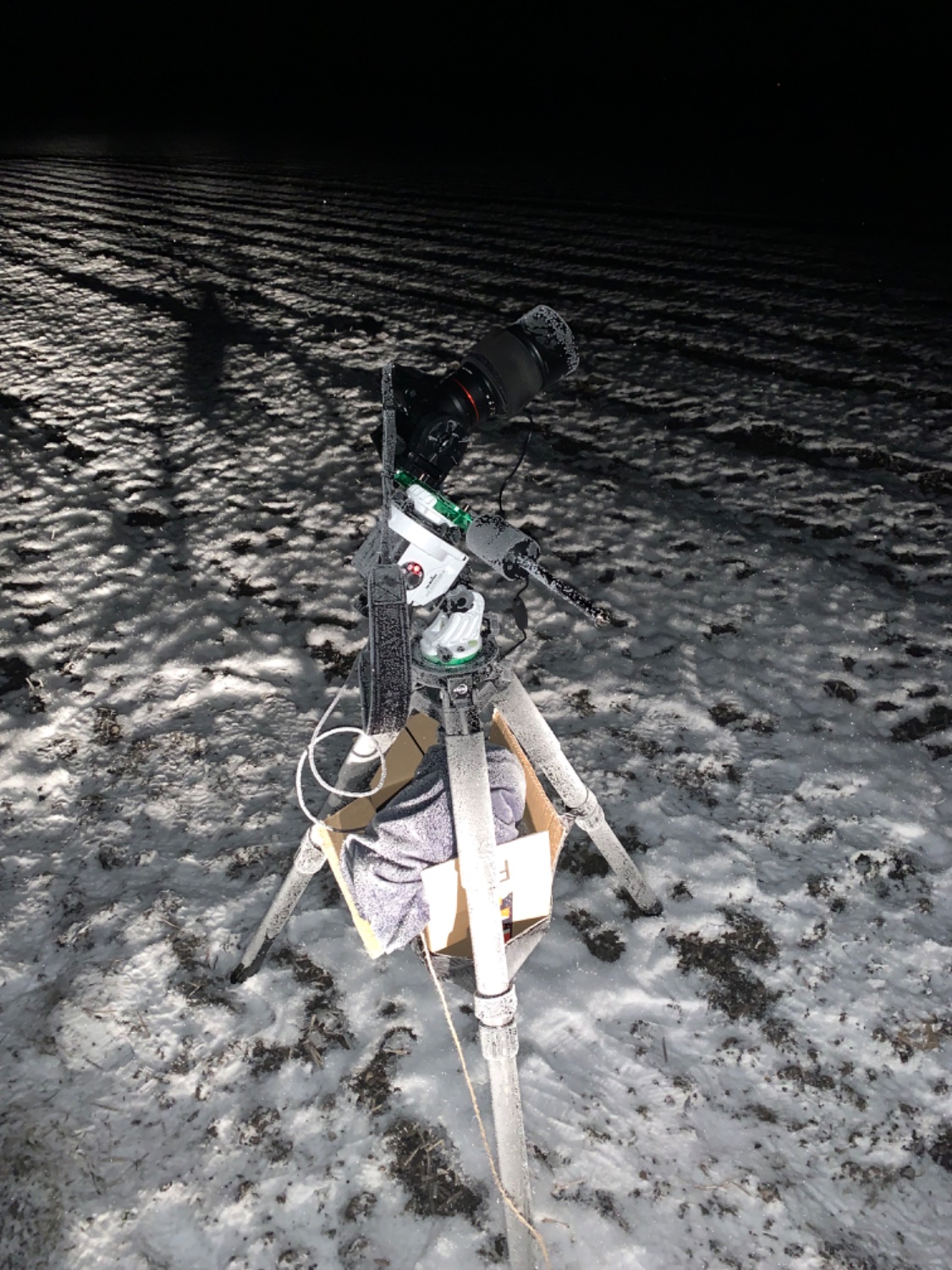My first try at IC 1805 with my stock Fuji XT camera. Turned out way nicer than I could’ve imagined.
equipment:
- Samyang 135mm f2.0
- Fuji X-T5 (unmodified)
- STC duo-narrowband clip-in filter
- Star adventurer 2i
frames:
- 550x 60s
- ISO 1600
- f2.8
editing:
- stacked in Siril
- background removal with GraXpert
- editing in Photoshop
More infos on Telescopius: https://telescopius.com/pictures/view/178053/deep_sky/heart-nebula/IC/1805/diffuse-nebula/by-maxi_franzi
If anyone knows what causes the elongated star shape in the top left corner please let me know. I tried to get the focus as perfect as possible.
I’ve just begun taking astrophotos and this is an amazing photo. The weather hasn’t cooperated much lately so I’m trying to understand using Siril as well as everything to do with my new telescope and camera. Did you also have a dew heater on your camera/lens? Did you take flats and bias and darks too? Sorry if too many questions, you just seem to know what you’re doing as that photo shows.
P.S. I don’t see any elongated stars. Ah, wait, I looked at the full res version on telescopius and I see the elongation. It seems to radiate away from the center of the image in all directions. More so as you leave the center. Something with the lens?
Well thank you very much! I‘m still a beginner myself, for our first tries the videos from Nebula Photos on youtube helped a lot, especially the workflow in Siril. This is only our second serious attempt, so I don’t know if my help is of any value, but I‘ll try anyway.
Yes we used a heater for the lens, the complete setup was covered in ice, so this helped a lot.

Yes I did make calibration frames but didn’t use them as I got problems with the result. I forgot that I shot with the dual narrowband filter and used an lcd for flats… But GraXpert handled the very strong gradiant quite well.
What I think helped the most in terms of quality and artifacts was the constant use of dithering. As the star adventurer 2i obviously can only dither in one axis we dithered manually on the other every 10-15 mins. Hope this helped!
Thanks for the reply and the reference to Nebula Photos; I’ll take a look there. From your photo, I see your weather was the same as mine lately. Hopefully there will be some clear skies again soon. Good luck, thanks again.

